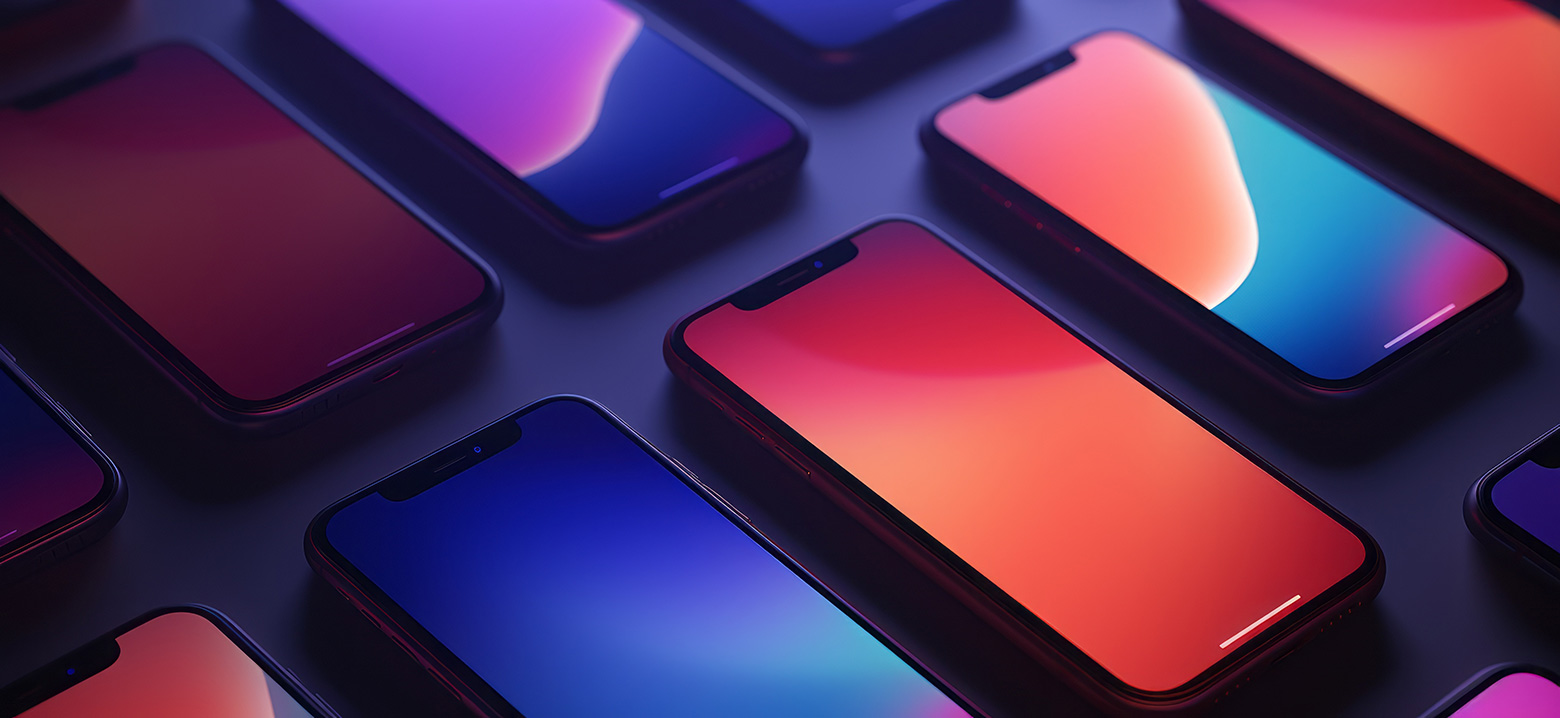
iPhone 17 Launch: How It Compares to iPhone 15, 16 & 16e
With Apple’s new iPhone 17 range now official, many UK customers (and mobile network shoppers like ours) will be asking: how big a leap is it over the iPhone 15, 16 and the more budget-oriented 16e?
In this article we compare iPhone models to break down the key differences – display, cameras, performance, battery, pricing – and help you decide which makes the most sense when choosing a plan or switching devices.
The New iPhone 17 Lineup at a Glance
The iPhone 17 generation introduces four models: the base iPhone 17, the ultra-thin iPhone Air, and two high-end models iPhone 17 Pro / iPhone 17 Pro Max
Key changes include:
- Base iPhone 17 now gets a 120 Hz ProMotion display and Always-On support, previously reserved for Pro models
- Stronger Ceramic Shield 2 glass (claimed 3× better scratch resistance).
- All new A19 chip, with Pro / Pro Max also benefiting from improved cooling systems.
- The iPhone Air brings an ultra-thin design and trades off some camera / performance features to prioritise portability.
Apple’s move effectively shrinks the gap between base and Pro models, making the base iPhone more capable out of the box.
Compare iPhone Models: 15 vs 16 vs 16e vs 17
Below is a comparison table highlighting core specs and differences among these models:
| Model | Display / Refresh | Chip / RAM | Rear Camera(s) | Battery / Charging | Notes / Strengths |
|---|---|---|---|---|---|
| iPhone 15 | 6.1″ OLED, 60 Hz | A16 Bionic, ~8 GB RAM | 48 MP + 12 MP ultra-wide | Standard battery, typical 20W wired / 7.5W wireless | Reliable all-rounder, solid ecosystem |
| iPhone 16 | 6.1″ OLED, 60 Hz | A18 chip, similar RAM to 15 | 48 MP + 12 MP ultra-wide (same as 15, minor tweaks) | Similar range; charging performance comparable | Often discounted now; solid mid-generation option |
| iPhone 16e | 6.1″ OLED, 60 Hz | A18 chip, 4-core GPU | Single 48 MP (Fusion Main) + 12 MP 2× telephoto via sensor crop | Up to 26h video playback, fast-charge (20W) to 50 % in 30 min | Lowest cost “modern” iPhone, lacks ultra-wide, no MagSafe |
| iPhone 17 (base) | 6.3″ OLED, 120 Hz ProMotion, Always-On, 3,000 nits peak | A19 chip, ~8 GB RAM | 48 MP wide + 48 MP ultra-wide, 2× optical zoom | 3692 mAh (≈14.35 Wh), up to 50 % in ~20 min (40W+) | Big step up in display & camera tech, improved scratch resistance |
| iPhone 17 Pro / Pro Max | OLED, high refresh, larger sizes (6.3″ & 6.9″) | A19 Pro, 12 GB RAM (LPDDR5X) | Triple-lens: wide + ultra-wide + 48 MP telephoto (8× crop) | Best battery among 17s; higher capacity for Pro Max | For power users, creators, those wanting max camera & battery |
What’s New (and Better) in iPhone 17 vs Earlier Generations
Display & Visual Experience
The leap from 60 Hz in iPhone 15/16/16e to 120 Hz ProMotion in the new iPhone 17 (even the base model) is one of the most tangible upgrades. This translates into smoother scrolling, animations and touch interactions. Peak brightness has soared (to ~3,000 nits) vs ~2,000 nits on prior models, making outdoor readability stronger. Always-On display also means glanceable info without fully waking the screen – something absent on older models.
Camera & Imaging
While earlier models used the familiar dual-lens setup, the 17 generation refines that with higher-resolution ultra-wide support, better low-light performance and improved computational processing. The Pro / Pro Max add a third telephoto 48 MP camera and 8× sensor crop zoom, delivering better reach for photography and video. Apple also touts “Fusion” camera systems for enhanced detail and dynamic range.
Performance & Longevity
The shift from A16 / A18 to A19 means year-over-year gains in CPU, GPU and Neural Engine performance – leveraged especially for AI, computational photography and multitasking. The Pro models benefit further from better thermal management (vapor chamber, etc.). And because the 17 generation is newer, its iOS update window will likely extend further into the future.
Battery & Charging
Comparing to 15/16, Apple has modestly increased battery size (to ~3,692 mAh for iPhone 17) and improved charging speeds. For example, the 17 can reach 50 % charge in about 20 minutes using a ≥ 40W adapter, a faster threshold than older models. Real-world testing shows the 17 Pro / Pro Max offering up to 30+ hours of video playback in rigorous use.
Design & Durability
Though the base iPhone 17 retains a broadly similar form factor to its predecessor, Apple has refined materials – introducing Ceramic Shield 2, which offers improved scratch resistance. The iPhone Air variant is particularly striking: at just ~5.64 mm thin (titanium body), it’s the slimmest iPhone ever built, trading off some camera features but hitting a niche for ultra-portability. The Pro / Pro Max models lean into more advanced finishes, better materials, and hardware optimisations.
Which Generation Makes Sense?
When buying via a mobile network, you’ll weigh three factors: device cost, network benefits (5G, features), and longevity (software and resale). Here’s how the generations fare:
- iPhone 15 / 16: Now often sold at discounted rates, these still offer solid performance, 5G support and Apple feature parity for many users. If your use doesn’t demand ultra-smooth refresh or advanced cameras, they remain compelling value picks.
- iPhone 16e: This is a budget-modern iPhone – removing some features to keep price low. It’s ideal for cost-conscious buyers who want newer chipsets but can live without ultra-wide lens, MagSafe, or higher refresh rate.
- iPhone 17 base: For many users, the 17 base is now the “sweet spot” – you get 120 Hz, stronger cameras, and better futureproofing without going full Pro. Network plans that bundle it will likely be competitive, and 5G will fully support its capabilities.
- iPhone 17 Pro / Pro Max: These are for enthusiasts, content creators or heavy users. If you film in ProRes, require telephoto reach, or need top-tier battery life, the premium is justified. On a business or higher-tier contract, the uplift may be worthwhile.
- iPhone Air: This is a compromise: thinner and lighter, but with fewer camera capabilities. Excellent for users prioritising portability or second device usage rather than flagship power.
A practical tip: if your contract term is 24 or 36 months, think about how long you’ll keep the device. The newer the generation, the longer Apple will support iOS updates, which helps your phone remain secure and performant toward the end of the contract.
Compare iPhone Models Summary
In summary when you compare iPhone models:
- The jump from 15/16 to 17 is meaningful, especially in display, camera and chip improvements.
- For many buyers, the iPhone 17 base delivers most of the modern features without the premium cost of Pro models.
- If budget sensitivity is key, 16e is a smart entry into the 2025 lineup with a newer chip and modern design – though it has trade-offs.
- Power users should still look at Pro / Pro Max for the maximum hardware and imaging capabilities.
When choosing your iPhone contract, always factor in plan data allowances, device cost (upfront vs monthly), and how you use your phone day to day. If you don’t need every cutting-edge feature, an iPhone 16 or even 15 may deliver excellent value – but for those who want a more future-proof device, the iPhone 17 series is a strong jump forward.
Click here to view exclusive offers for the iPhone 17, the ultra-thin iPhone Air, and the two high-end models iPhone 17 Pro and iPhone 17 Pro Max.

